Introduction: Embracing the Comfort of Stewed Dried Eggplant
In the realm of culinary arts, there exists a dish that transcends the boundaries of seasons and geographical locations, offering a warm embrace to the palate and soul alike. This dish is none other than stewed dried eggplant—a hearty, flavorful meal that combines the simplicity of traditional cooking with the depth of time-honored techniques. Whether you’re a seasoned chef or an enthusiastic home cook, mastering the art of making stewed dried eggplant can add a delightful twist to your culinary repertoire. In this guide, we’ll embark on a culinary journey, exploring every step of the process, from selecting the perfect eggplants to achieving that perfect, mouthwatering stew.
Section 1: The Art of Drying Eggplants

Before diving into the stewing process, it’s crucial to understand the art of drying eggplants. This preliminary step is vital as it not only preserves the vegetable but also enhances its flavor, transforming it into a concentrated burst of umami.
1 Choosing the Right Eggplants
Start by selecting firm, glossy eggplants with a uniform color. Avoid those that are soft, bruised, or have spots, as they won’t dry well and may harbor unwanted bacteria. Varieties such as globe eggplants or Italian eggplants are ideal for drying due to their dense flesh and fewer seeds.
2 Preparation for Drying
Wash the eggplants thoroughly under running water and pat them dry using a clean kitchen towel. Cut them into uniform slices or strips, depending on your preference. Thinner slices will dry faster but may require more attention during the stewing process to prevent them from disintegrating.
3 Drying Methods
There are several methods to dry eggplants, each with its own set of pros and cons:
-
Sun-Drying: The most traditional method involves laying the slices on clean, mesh trays or muslin cloth in direct sunlight. This can take several days, depending on the climate. Sun-dried eggplants retain a unique, sun-kissed flavor.
-
Oven-Drying: For a quicker option, preheat your oven to its lowest setting (around 150°F or 65°C) and place the eggplant slices on baking sheets lined with parchment paper. Prop the oven door slightly ajar to allow moisture to escape. This method takes around 4-6 hours, depending on thickness.
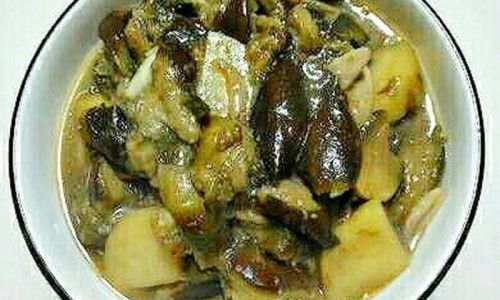
-
Dehydrator: Using a food dehydrator is the most controlled method. Set it to a temperature between 125-135°F (52-57°C) and dry the slices until they are leathery and slightly translucent, which can take 8-12 hours.
Once dried, store the eggplants in an airtight container in a cool, dark place. They can be kept for several months, ready to be transformed into a stew at any time.
Section 2: Preparing the Stew Base
The foundation of any stew lies in its base, which provides the essential flavors and textures. For stewed dried eggplant, a rich, aromatic broth is key.
1 Gathering Ingredients
Assemble your ingredients:
- Dried eggplant slices
- Olive oil or vegetable oil
- Onions, finely chopped
- Garlic, minced
- Fresh tomatoes, peeled and chopped, or canned tomatoes
- Tomato paste
- Beef or vegetable broth
- Red wine vinegar (optional)
- Fresh herbs such as thyme, rosemary, and bay leaves
- Salt and pepper to taste
- Optional additions: smoked paprika, red pepper flakes, or a splash of Worcestershire sauce for extra depth
2 Sautéing the Aromatics
In a heavy-bottomed pot or Dutch oven, heat a generous amount of olive oil over medium heat. Add the chopped onions and sauté until they are translucent and slightly caramelized, about 5-7 minutes. This process releases their natural sugars, adding sweetness to the broth.
Next, stir in the minced garlic and cook until fragrant, but be careful not to let it burn, as this will turn the stew bitter.
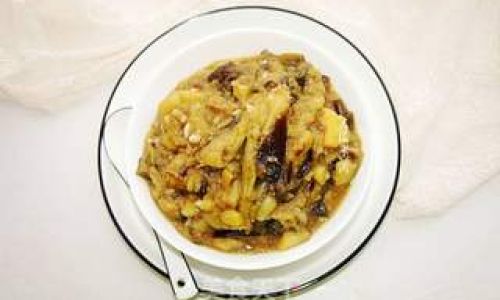
3 Building the Broth
Add the chopped tomatoes and tomato paste to the pot, stirring to combine. Cook for a few minutes to allow the tomatoes to break down and form a thick sauce. Pour in the beef or vegetable broth, ensuring it covers the ingredients by at least an inch.
For an extra layer of flavor, incorporate a splash of red wine vinegar, which helps to balance the acidity and bring out the flavors of the tomatoes. Add the fresh herbs, salt, and pepper, and bring the mixture to a gentle simmer.
Section 3: Incorporating the Dried Eggplant
Now, it’s time to introduce the star ingredient—the dried eggplant.
1 Adding the Dried Eggplant
Carefully add the dried eggplant slices to the simmering broth. They will absorb the liquid quickly, so be prepared to add more broth if necessary to maintain the desired consistency. Stir gently to prevent the slices from sticking to the bottom of the pot.
2 Simmering to Perfection
Reduce the heat to low and let the stew simmer gently, uncovered, for at least an hour. This slow cooking process allows the flavors to meld together and the eggplant to soften, releasing its concentrated flavors into the broth.
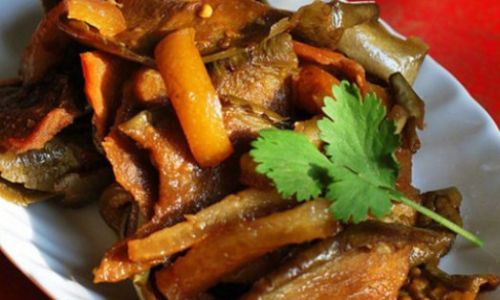
Occasionally stir the stew to ensure even cooking and prevent sticking. If the stew becomes too thick, add more broth in small increments. Conversely, if you prefer a thicker consistency, let it reduce further.
3 Seasoning and Final Touches
Taste the stew and adjust the seasoning with salt and pepper as needed. If you desire a bit more complexity, consider adding a pinch of smoked paprika or a few red pepper flakes for a hint of heat. A splash of Worcestershire sauce can also add a rich, savory depth.
For a fresh, herbal finish, stir in a handful of chopped fresh parsley or cilantro just before serving. This not only brightens the flavors but also adds a pop of color to the dish.
Section 4: Serving and Enjoying
Stewed dried eggplant is a versatile dish that can be enjoyed in various ways.
1 Serving Suggestions
Serve the stew over a bed of cooked grains such as rice, quinoa, or barley to soak up the delicious broth. It also pairs wonderfully with crusty bread or a side of mashed potatoes. For a heartier meal, serve it alongside roasted meats or grilled vegetables.
2 Preserving the Magic
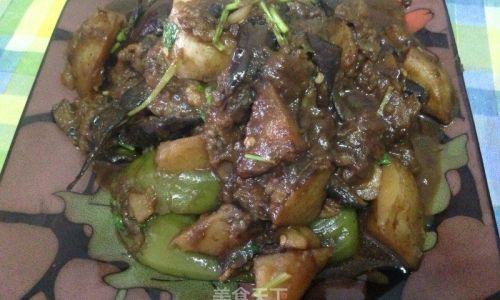
If you have leftovers, store them in an airtight container in the refrigerator for up to a week. The flavors will continue to develop, making it even more delicious with time. You can also freeze portions for future meals, ensuring you always have a comforting, homemade stew at the ready.
Conclusion: A Culinary Journey Concluded
Making stewed dried eggplant is not just about following a recipe; it’s about embarking on a culinary journey that connects you to the traditions of preserving and transforming simple ingredients into extraordinary dishes. By mastering the art of drying eggplants and crafting a rich, aromatic broth, you’ll create a stew that warms the body and soul, inviting friends and family to share in the comfort and joy of homemade cooking.
So, the next time you find yourself in the kitchen, reach for those dried eggplant slices and let the process of creating a hearty, flavorful stew begin. Embrace the simplicity and the complexity, the patience and the reward, and let the magic of stewed dried eggplant unfold before your eyes and on your plate. Bon appétit!
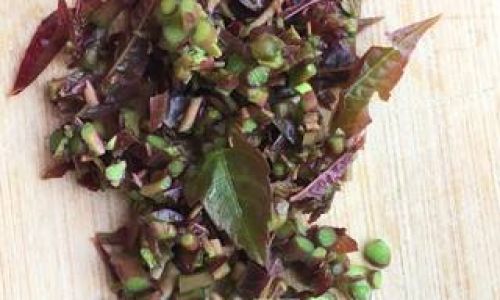




0 comments